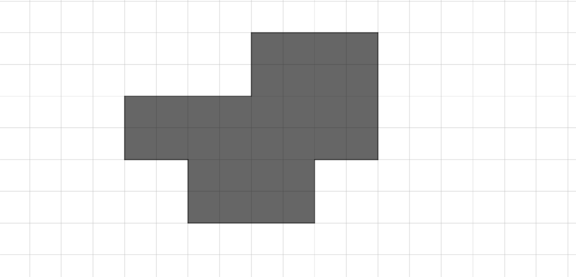Difference between revisions of "Exploring area and perimeter"
Jump to navigation
Jump to search
| Line 1: | Line 1: | ||
=== Activity 1: Area and Perimeter concepts === | === Activity 1: Area and Perimeter concepts === | ||
| − | === Materials: === | + | ==== Materials: ==== |
Rectangular dot sheets, stationery | Rectangular dot sheets, stationery | ||
| − | === Objective: === | + | ==== Objective: ==== |
To understand the relationship between area and perimeter of 2D shapes | To understand the relationship between area and perimeter of 2D shapes | ||
| − | === Process: === | + | ==== Process: ==== |
# Recall area and perimeter concepts: ask students to explain the meaning of area and perimeter in their own words | # Recall area and perimeter concepts: ask students to explain the meaning of area and perimeter in their own words | ||
| Line 28: | Line 28: | ||
=== Activity 2: Puzzle === | === Activity 2: Puzzle === | ||
| − | === Materials: === | + | ==== Materials: ==== |
Print-outs of the puzzle [or] projector to display and rectangular dot sheets | Print-outs of the puzzle [or] projector to display and rectangular dot sheets | ||
| − | === Objectives: === | + | ==== Objectives: ==== |
| − | === Process: === | + | ==== Process: ==== |
| − | # Handover print outs of the | + | # Handover print outs of the 'Share the land' puzzle([https://ncert.nic.in/textbook.php?eemh1=11-14 NCERT Class 5 Mathematics Textbook]) to students individually or in pairs and ask them to solve it. |
# Discuss different solutions/strategies that students come up with | # Discuss different solutions/strategies that students come up with | ||
| − | + | ||
| − | + | === Discussion after both activities: === | |
| − | + | * Does perimeter always increase if area increases? | |
| + | * Does area always increase if perimeter increases? (If they say yes,give the initial grid examples as reference and ask them to check if it is holding true) | ||
Revision as of 18:40, 27 December 2022
Activity 1: Area and Perimeter concepts
Materials:
Rectangular dot sheets, stationery
Objective:
To understand the relationship between area and perimeter of 2D shapes
Process:
- Recall area and perimeter concepts: ask students to explain the meaning of area and perimeter in their own words
- Establish differences between area and perimeter:
- Perimeter is a one dimensional quantity and area is a two dimensional quantity
- Area is expressed in sq.units and perimeter in units
- Area defines the space occupied by a shape, perimeter is the length of its boundary
- Hand over dot sheets to individual students or pairs of students and inform that the distance between any two horizontally or vertically adjacent dots in the dot sheet is 1 cm
- Ask students to draw and shade a square of area 1 sq. cm and ask them to find out the perimeter of the same
- Repeat for 4 sq.cm
- Ask students to observe these shapes and find out what is the area and perimeter of each shape.
- Next, draw this shape on the board/project this image and ask students what is the area and perimeter of this shape. If anyone is unclear, explain how the area and the perimeter can be found out
- Ask students to calculate the area of the shaded region (8 sq. cm). Then, ask them to draw a different shape with the same area
- Next, ask them to compare the perimeter of the shape displayed and the one they drew
- Call out a few students whose shapes have perimeter lesser, greater and same as the one displayed and share it with the class
- If there are no examples for any of the categories, challenge them to find suitable shapes
Activity 2: Puzzle
Materials:
Print-outs of the puzzle [or] projector to display and rectangular dot sheets
Objectives:
Process:
- Handover print outs of the 'Share the land' puzzle(NCERT Class 5 Mathematics Textbook) to students individually or in pairs and ask them to solve it.
- Discuss different solutions/strategies that students come up with
Discussion after both activities:
- Does perimeter always increase if area increases?
- Does area always increase if perimeter increases? (If they say yes,give the initial grid examples as reference and ask them to check if it is holding true)

